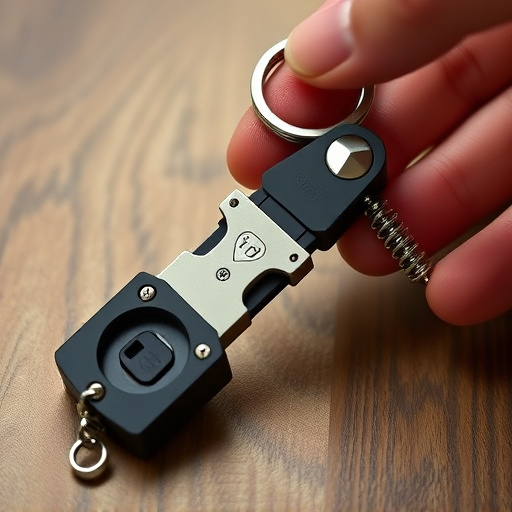Self-defense keychains are subject to varying state laws across the USA, with regulations around permit requirements, weapon types, and sizes. For legal compliance and safety, it's vital to research local laws before purchasing. Tactical keychain grips with ergonomic designs, strong construction, and specialized mechanisms enhance deployment accuracy and user safety, ensuring citizens can protect themselves within their state's legal frameworks.
“Uncover the power of self-defense with a tactical keyring—a compact yet potent tool for personal safety. This comprehensive guide explores the legal landscape of self-defense keychains across the USA, ensuring you understand the rules in your state. We delve into the strategic design of tactical grips, highlighting their role as a crucial component for effective self-defense. Additionally, discover essential features and considerations when choosing the right keychain, empowering you to make an informed decision for your peace of mind.”
- Understanding Self Defense Keychain Legalities Across the USA
- Tactical Grip Design: A Key Component for Effective Self-Defense
- Choosing the Right Self Defense Keychain: Features and Considerations
Understanding Self Defense Keychain Legalities Across the USA
The legality of self-defense keychains varies significantly across the USA, with each state having its own set of regulations. When considering a tactical grip design for self-defense, it’s crucial to understand these laws by state. Some states allow the open carry of self-defense tools, including keychains, without a permit, while others mandate specific requirements like permits or registration. Still, other states have restrictions on the type and size of self-defense weapons, including keychains, to prevent misuse.
Understanding Self Defense Keychain Laws by State is essential for ensuring compliance and safety. Users must be aware of their rights and responsibilities to avoid legal repercussions. It’s recommended to research local laws and consult with relevant authorities before purchasing or carrying a self-defense keychain, as these regulations can change and are subject to interpretation.
Tactical Grip Design: A Key Component for Effective Self-Defense
Tactical Grip Design plays a pivotal role in enhancing the effectiveness of self-defense tools, especially compact ones like keychains. The ability to grasp and manipulate an object firmly and precisely during a critical situation can be the difference between safety and harm. A well-designed tactical grip ensures a secure hold on the keychain, allowing users to deploy it quickly and accurately, even under stress. This is particularly relevant when considering Self Defense Keychain Laws by State, where legality depends not just on the object’s functionality but also on the user’s ability to control it effectively.
Such designs often incorporate ergonomic shapes, textured surfaces, and specialized materials that improve grip strength and durability. These features are especially crucial for keychains meant for self-defense, as they enable users to employ them as tactical tools in various scenarios. By focusing on these details, manufacturers contribute to the overall safety and reliability of self-defense mechanisms accessible to citizens across different states, ensuring individuals can protect themselves according to local laws.
Choosing the Right Self Defense Keychain: Features and Considerations
When selecting a self-defense keychain, it’s crucial to consider both its tactical effectiveness and legal compliance. Different states have varying Self Defense Keychain Laws that govern the use and possession of such devices. In the US, for instance, some states allow defensive keychains as long as they meet specific criteria, while others may restrict or prohibit them entirely. Therefore, before making a purchase, it’s essential to research and understand your state’s laws to ensure you remain within legal boundaries.
Key features to look out for in a self-defense keychain include durable construction, a strong locking mechanism, ease of use, and discreet design. The grip should be ergonomic, allowing for quick deployment during an emergency. Additionally, consider the type of self-defense mechanism; some keychains employ sharp blades or spikes, while others use pressure points or non-lethal force. Choose one that aligns with your level of comfort, training, and intended purpose, keeping in mind personal safety and legal responsibility.
When considering a self-defense keychain, understanding both its tactical design and legal restrictions is paramount. Each state in the USA has unique laws regarding self-defense tools, so it’s crucial to research and comply with local regulations. By choosing a well-designed tactical grip keychain that aligns with your needs and respects legal boundaries, you can enhance your personal safety while navigating the complexities of self-defense options available to you by state.
